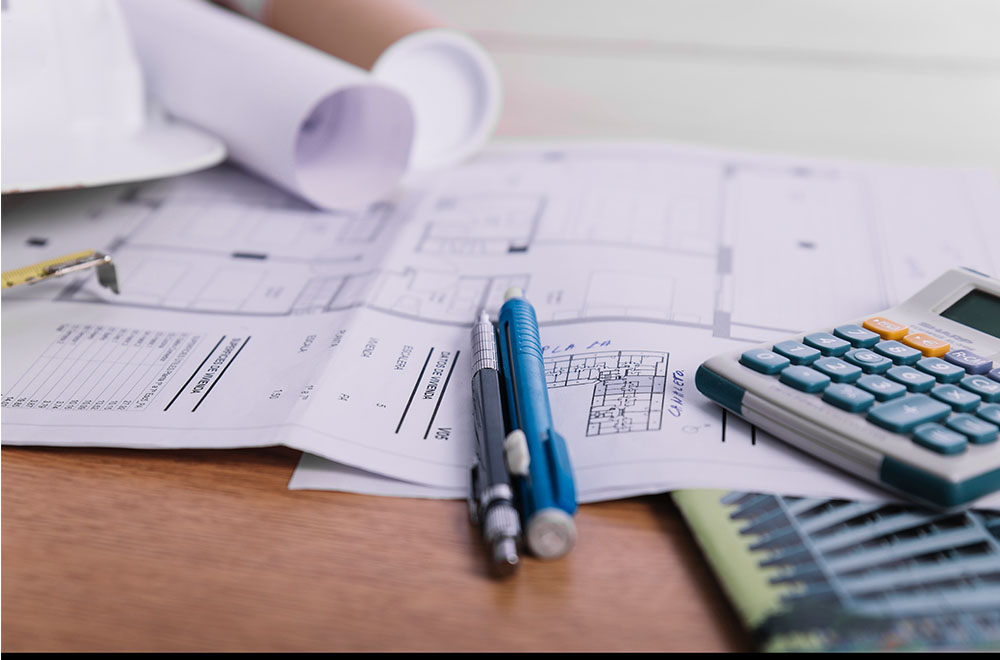Estimating cost is the basis of successful project management. It keeps projects within budget, meets deadlines, and achieves goals without unforeseen financial overruns. However, capturing this process can be difficult due to various methodologies and best practices.
This guide explains estimating by drawing insights from industry experts and top resources. Whether you are a project manager, construction professional, or involved in project planning, this article will help you confidently navigate the complexities of cost estimation so that you can create estimates without errors.
Table of Contents
ToggleWhat is the Estimating Process in Construction?
The estimating process predicts the costs, resources, and time needed to complete a project. It involves breaking down the project into smaller parts, identifying tasks, and calculating costs for each.
Project managers can plan better, assign resources efficiently, and make wise decisions when estimates are correct. This reduces the risk of running out of funds or facing unexpected expenses, which can delay or stop a project.
For example, underestimating the cost of materials or labor in construction can lead to budget overruns and financial strain. Accurate estimates also help set realistic timelines, keeping the project on track for timely completion.
Steps in the Construction Estimating Process
The estimation method goes through the following steps:
1. Planning for Cost Estimation
The first step in the estimating process is to plan for cost estimation.
Firstly, you will find the class of estimate, deciding how detailed your estimate needs to be. Different classes of estimates offer varying levels of detail and accuracy.
For example, a preliminary estimate is a rough guess based on minimal information. In contrast, a detailed estimate uses specific data and calculations. This classification helps you know the effort and resources required for the estimate.
Next, you will find the current costs of materials, labor, and other resources needed for the project and develop the methodologies you will use in estimation.
2. Quantifying the Scope
Quantification is division of project details into specific tasks and resources. For example, if you’re building a house, you must determine the exact amount of materials like bricks, cement, and wood. This creates a clear list of all items and activities needed for the project.
Work Breakdown Structure (WBS) is a valuable tool for this, which divides the project into shorter, manageable sections. Each unit represents a task or component, helping you organize the work and noticeable.
3. Pricing the Estimate
The next step is adjusting base costs to fit your project’s specific conditions. For instance, if building materials cost more in your area, you must include this in your estimate. Consider local labor rates, material costs, and unique project requirements.
4. Establishing Control Budgets
Once you have priced your estimate, develop control budgets. You will convert your estimates into actionable budgets to manage the project. Control budgets help track expenses and keep the project within financial limits.
A cost baseline is a fixed reference point showing the expected project costs. It helps compare actual expenses against the estimated budget, making identifying and addressing variances easier.
5. Reviewing and Validating Estimates
The final step is to review and validate your estimates. Check your estimates to confirm they are exact and account for potential risks and uncertainties. Price fluctuations, supply chain issues, and other variables might affect your project , so consider them.
As you gather more information or project conditions change, update your estimates to reflect these changes. Regular reviews and adjustments help maintain the accuracy of your estimates and ensure project success.
Techniques and Approaches in Estimating
Analogous Estimating
Analogous estimating uses historical data from similar projects to predict costs for a new project. This technique is helpful in the early phases when detailed information is unavailable.
For example, if a company built a similar building last year, they can use those costs to estimate the new project’s costs.
This method relies on the project manager’s expertise to adjust historical data to fit the current project’s specifics. Although not as precise as other methods, it provides a quick and reasonably valid estimate.
Bottom-Up Estimating
The project is divided into smaller parts using reliable tool like Work Breakdown Structure (WBS). Each part is assessed separately, and the total cost is measured by summing these individual estimates.
This method is the most authentic because it considers all project details. However, it is also time-consuming. For example, if building a house, you estimate the cost of every component, such as the foundation, walls, and roof.
Other Techniques
Alternative estimating procedures include parametric and stochastic methods. Parametric estimating uses statistical relationships between historical data and variables to predict future costs.
For instance, if building a square meter of a structure typically costs a certain amount, you can multiply that cost by the total square meters to get an estimate. This method is proper when you have quantifiable data and need a quick estimate.
Stochastic estimating utilises probabilistic models to account for uncertainty in cost estimates. This procedure is suitable in projects with high uncertainty or accounting for various risk factors. It provides a range of possible costs, helping project managers prepare for different scenarios.
What is Industry-Specific Estimating Processes
Construction Estimating
Construction estimating includes creating material takeoffs and a bill of quantities—a material takeoff lists all the materials needed for a project, including quantities and specifications. For example, if you are building a house, the material takeoff would include bricks, cement, wood, and nails.
The bill of quantities itemizes all these materials and their costs, providing a detailed study of the project’s expenses. This helps set a clear budget and ensures all materials are accounted for. Using these documents, construction managers can better control costs, avoid shortages, and keep the project on schedule.
Project Management Estimating
It applies to various projects beyond construction which includes scope and deliverables. Both are crucial which defines the project’s goal and the specific outputs or results of the project.
Estimation withour errors verifiy that all tasks, resources are appropriately allocated, and the project can be completed on time and within budget for which you are going to estimate.
Conclusion
A structured estimating process is essential for successful construction project handling. It ensures projects stay within budget, meet deadlines, and avoid financial surprises. These practices support effective decision-making and contribute to project success and efficiency.
We encourage you to implement these steps and techniques in your projects. Doing so will help you manage costs more effectively and achieve your project goals.





